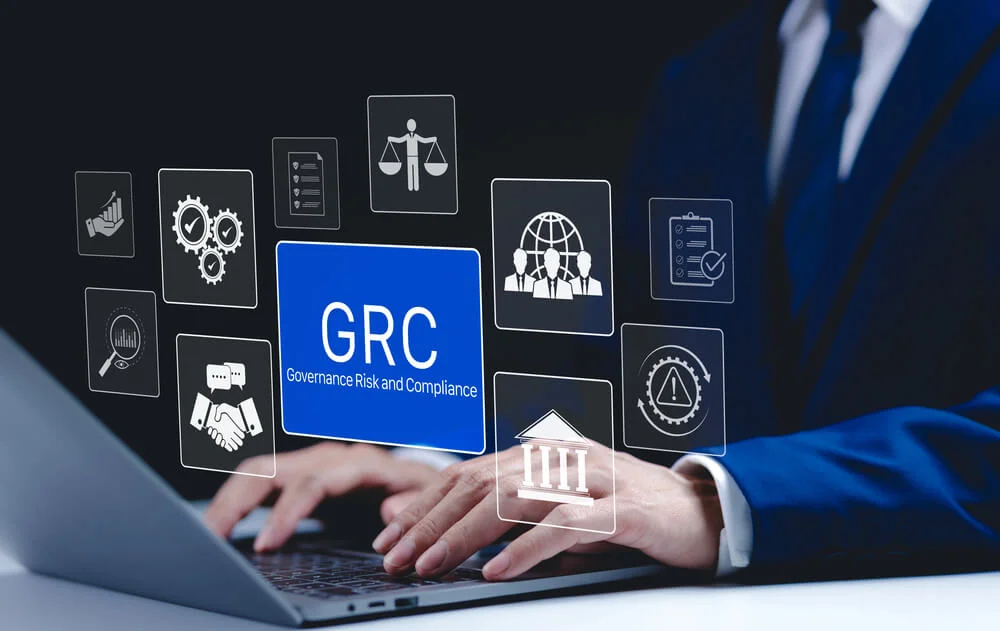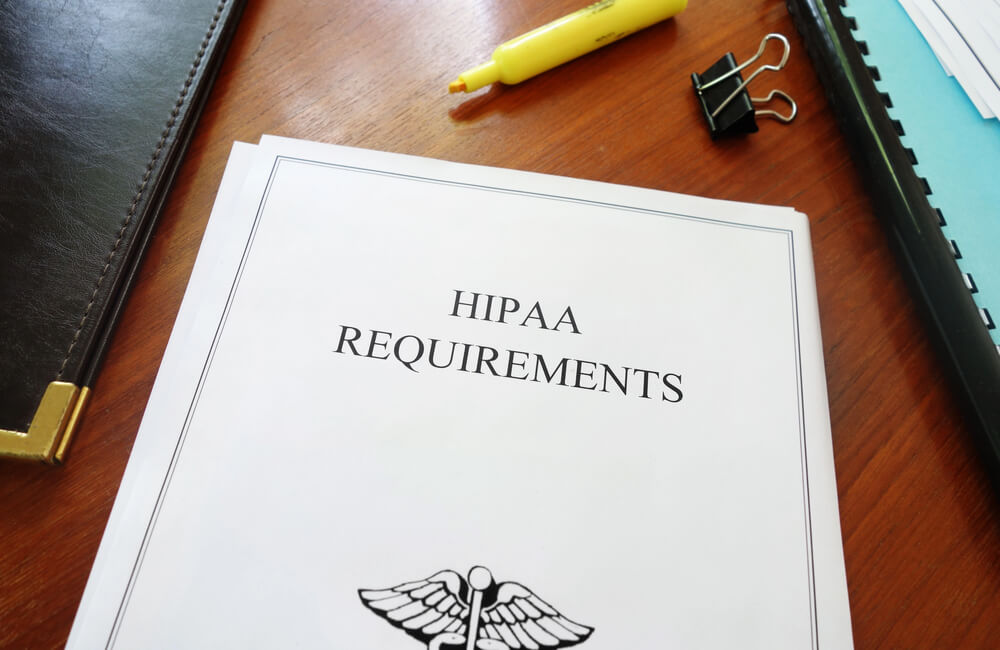The impacts of cybersecurity mistakes are higher than ever. In 2023, the average cost of a data breach was $4.45 million, not counting the reputational harm brands can suffer. These risks apply to healthcare, manufacturing, sales, education, and financial organizations, along with many others. To minimize the risk of data intrusions, today’s entrepreneurs urgently need to implement a GRC IT framework.
What Is GRC in IT Security?

GRC stands for governance, risk and compliance. The GRC framework is a business strategy that helps organizations balance company objectives with three vital pillars:
- Governance:Effectively managing company assets, resources, and technology
- Risk management: Identifying organizational risks, performing a comprehensive analysis, and creating risk prevention strategies
- Compliance:Understanding and following external industry standards, laws and governmental regulations, and adhering to internal company policies
The principles of GRC can apply to different areas of business management, but they’re especially relevant for organizational IT teams. Many enterprises create separate policies for IT governance, IT risk management, and IT compliance needs.
A Brief History of GRC for IT
The GRC methodology was developed in the early 2000s. The concept was the focus of a peer-reviewed academic paper by OCEG founder Scott Mitchell titled “GRC360: A framework to help organizations drive principled performance,” published in 2007.
GRC grew out of a recognized need to eliminate siloing, which occurs when the departments or divisions of an operation do not effectively communicate information or share resources. In IT security, GRC is an effective strategy that aligns best practices for IT teams and can scale to every aspect of operations.
The Purpose of GRC in IT and Cybersecurity
GRC programs aim to manage security risks while improving performance, increasing efficiency and raising return on investment in IT assets. Complying with relevant standards helps businesses avoid negative legal and financial impacts from careless data management. When implemented correctly, IT security frameworks can eliminate data silos in IT departments and other areas of operations.
Of course, for GRC models to be effective, organizations must go beyond words on paper. It’s necessary to understand each function in an IT security context, set clear objectives and put plans into action one step at a time.
What Does Governance Mean for IT Security?
Within IT, good governance involves adherence to policies or rules that ensure that business practices enforce the technical priorities or goals of an organization. Some examples include:
- Protocols for controlling technological assets or infrastructure
- Policies that hold personnel accountable for conduct and results
- Establishment of training programs for good information security practices at an organization-wide level
- Sufficient resources or personnel assigned to IT security tasks and oversight
Beyond expectations for balanced resource management and ethical conduct, another meaning of GRC in cybersecurity is the principle of transparency. GRC increases visibility and reduces siloing by increasing awareness of security practices across organizations. Good governance should inform general technology use policies as well as interpersonal and technical workflows.
How Does Risk Management Apply to IT Security?

The privacy and security concerns that have long been the provenance of IT departments now extend throughout most enterprises. IT professionals can assess potential hazards and recommend prevention or mitigation measures for entire organizations, in part because GRC eliminates siloes that could otherwise limit awareness to technical personnel.
Practices for managing risk in IT departments should correspond to broader enterprise risk management programs. Stakeholders in every division should address financial, legal and security risks. A shared understanding of GRC can unite the IT, accounting, human resources and legal departments of an enterprise.
How Does Compliance Relate to IT Security?
The function of compliance is to promote adherence to policies, rules, standards or laws. This aspect of GRC can limit exposure to fines, penalties or legal action associated with violations of industry standards or governmental regulations.
The role of GRC in IT security centers around adherence to operational best practices. Compliance helps ensure that data and systems are secured and used in accordance with relevant regulations. In turn, businesses can enjoy better protection against ransomware attacks, hacks, and other cybersecurity dangers.
The compliance aspect of the GRC methodology also indicates the importance of integrating external and internal requirements. Whether an enterprise operates under SOC 2, ISO 27001, HIPAA or another framework, a platform that allows for continuous compliance monitoring and ongoing risk management can support this function of a GRC strategy.
Why Is GRC a Good Investment for Today’s Businesses?

Put simply, combining GRC and IT allows enterprises to follow the best standards for data security. Organizations move purposefully instead of blindly advancing. Dependable strategies can produce concrete benefits:
- Adherence to GRC best practices can prevent errors and misconduct that lead to over $1 trillion in losses every year.
- GRC frameworks can reduce the time required for internal audits and compliance management by eliminating confusion and duplicated efforts.
- Smart organizational IT management (such as zero-trust architecture and access control) reduces the risks of human errors, the weakest link in any IT security chain.
Many risk prevention strategies are compatible with IT automation tools, such as document workflows and data retention policies.
How Can Compliance Automation Benefit a GRC IT Framework?

A common misconception is that GRC goals mean increasing organizational spending significantly. In reality, one of the biggest reasons to implement a GRC framework is to identify opportunities to increase efficiency, improve performance and reduce downtime.
Put simply, correctly implemented governance aims to raise return on investment while reducing exposure to risks. This strategy can cut excess costs related to expenditures on redundant or outdated assets, such as legacy servers that are more trouble than they’re worth. One of the best ways to achieve GRC and IT goals is to use a platform that promotes visibility and establishes reliable baselines.
As a centralized information security and compliance automation platform, Compyl serves as a powerful GRC tool. All-in-one platforms are flexible enough to accommodate the priorities of any operation and scale over time. Organizations can set measurable key performance indicators when developing a GRC strategy and track these metrics over time. This approach helps IT teams set specific goals, break down long-term objectives into a realistic roadmap and identify obstacles and challenges in real time.
What Are the Leading IT Governance Frameworks?
Several frameworks provide specific guidance for implementing GRC in IT security. The six governing principles of COBIT 2019, which was developed by the Information Systems Audit and Control Association, align with GRC priorities. The Committee of Sponsoring Organizations, an independent committee organized by five professional accounting associations, maintains the COSO Enterprise Risk Management Framework. The COSO ERM also aligns with GRC functions.
One of the longest-standing frameworks for IT service management is the Information Technology Infrastructure Library. ITIL version 4, which was released in 2019, goes beyond IT to provide recommendations for aligning general service management with GRC priorities. These frameworks can provide structure for the stakeholders of enterprises seeking to develop GRC programs that extend principles of IT security to broader operations.
Take Steps To Implement GRC for IT Security ASAP
IT security isn’t optional for today’s organizations. Taking concrete steps to avoid risky cybersecurity practices and invest in dependable solutions should be a priority. Creating a framework for GRC and IT is the first step toward prioritizing good governance, risk management and compliance practices. To make GRC implementation easier, use a trustworthy platform for end-to-end information security and continuous compliance monitoring. Request a demo to see how Compyl excels as a GRC tool.




